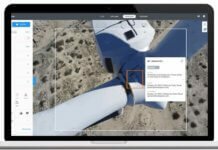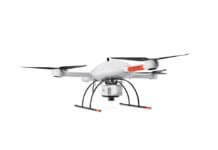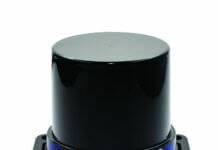In September, Pix4D participated in a weeklong unmanned aerial vehicle (UAV) training mission in Nepal with other technology leaders. There, they helped to teach engineering students at Kathmandu University (KU) how to use drones and image-processing software to create professional maps and models for a wide range of humanitarian and development purposes.
Although drones and photogrammetric software for mapping applications are already being used in the fields of surveying and geomatics, solutions are quickly developing for other fields, such as emergency response.
In the event of an earthquake – like the one that struck Nepal in the spring – maps and models produced from drone-acquired imagery and image-processing software can help assist search-and-rescue operations, damage assessment, reconstruction, preparedness planning and cultural preservation.
Before the training, KU had already been conducting research with drones and was looking to expand its expertise. Humanitarian UAV Network founder, Patrick Meier, spearheaded the drone-mapping training in collaboration with KU’s Department of Civil and Geomatics Engineering, Kathmandu Living Labs (KLL), DJI, and Pix4D. The intent was to build a community of Nepali UAV operators skilled in imagery analysis.
By spending time with leading experts in drone technology, students and young professionals learned best practices, guidelines and regulations regarding drone operations from university leaders, Nepal aviation regulators and UAViators.
They also received hands-on flight instruction from DJI, open street map usage from KLL and software training from Pix4D. Trainees created specialized flight plans using the Pix4Dmapper Capture app for image acquisition; then, they input that data into image-processing software Pix4Dmapper to create precise 3D models and maps for further analysis.
In an emergency-response scenario, these kinds of maps and models provide critical information for disaster relief. Satellite imagery has been used in these situations for decades – but not without any shortcomings: Availability, spatial resolution and restrictive vertical perspective have limited the usability of satellite-generated datasets.
Apart from their low cost, drones, combined with image processing software, can provide frequent surveys of rapidly changing areas without cloud coverage issues and also offer a much more reliable oblique perspective. All these advantages – and the very high-resolution output generated by software such as Pix4Dmapper – have placed UAVs in the spotlight of the disaster-response community.
During operational training in the field, participants worked alongside DJI, Pix4D and the Community Disaster Management Committee of Panga – a village that had been badly damaged in the earthquake – to create a complete map of the area. Using Phantom 3 Advanced quadcopters and Pix4Dmapper, the team produced orthomosaics overnight. The local community can now use them for the reconstruction process, as well as for creating preparedness plans for future events.
Though this training had a humanitarian base, the goal was to further validate how drones and image analysis can be used in disaster situations. By the end of the workshop, students and professionals had gained firsthand experience with the hardware and software and were able to generate valuable information for the rebuilding process of Panga. Their motivation and collaboration in Nepal will continue to see the applications of drones and image-mapping software as a response to emergencies.










